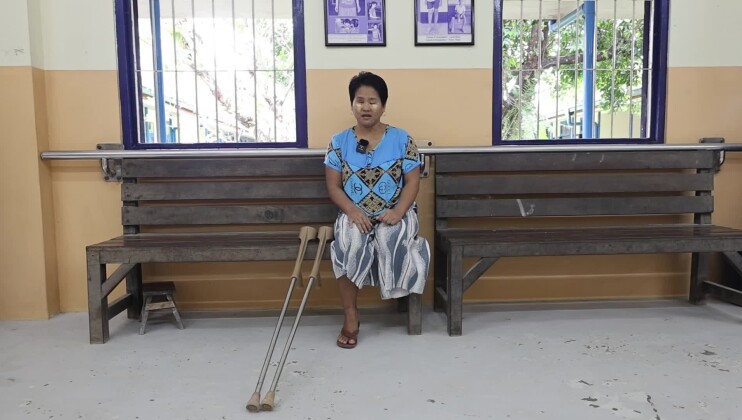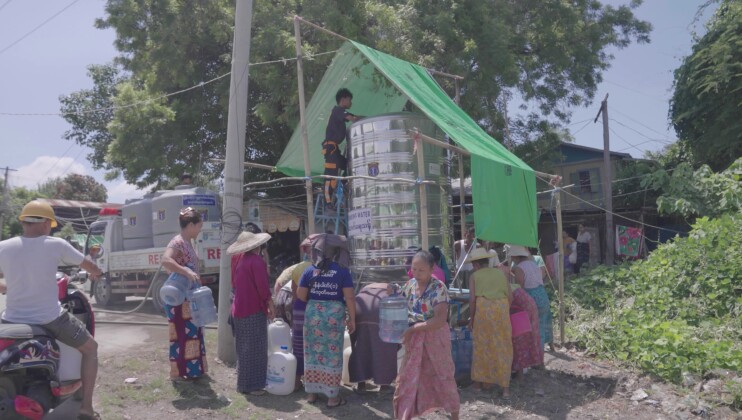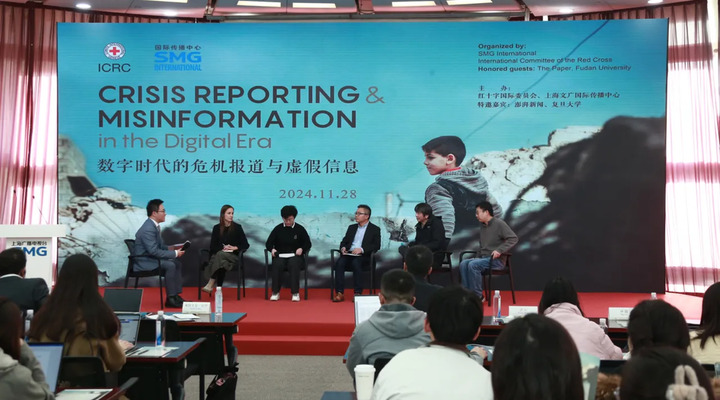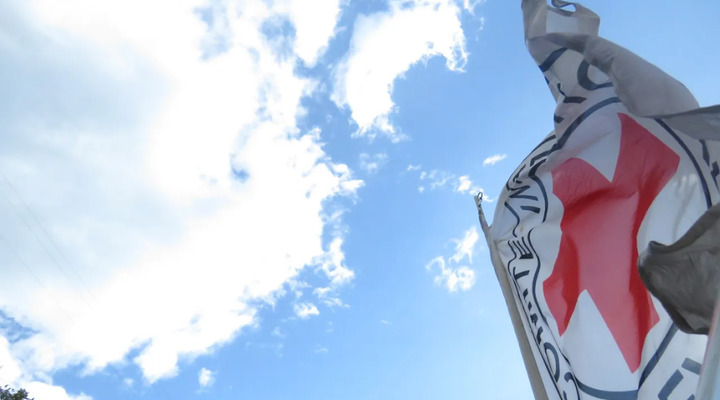Japan: New fatal illnesses linked to nuclear bomb
WARNING: SOME OF THESE IMAGES COULD BE DISTRESSING *
Seventy years after the atomic bombings of Hiroshima and Nagasaki, Red Cross hospitals are still treating thousands of survivors and identifying new links between radiation exposure and fatal illnesses.
Initially, many medical experts expected the effect of radiation to diminish within 10 to 20 years. Contrary to this assumption, it is now clear that these atomic bombs have caused lifelong illnesses. New cases of cancer and leukaemia rates are still emerging and the number of atomic bomb survivors developing heart disease is rising.
Dr Masao Tomonaga, himself an atomic bomb survivor, is a radiation exposure expert and elaborates on his most recent discovery: “Until now, it was believed that there was no link between the radiation exposure and blood vessel related illnesses. However, as the atomic survivors get older, many of them have suffered from heart attacks and angina. Our study shows a clear link between the amount of radiation exposure and illnesses related to blood vessels.”
Nearly 200,000 survivors are still alive. Mr Sumiteru Taniguchi was 16 years old when the bomb hit Nagasaki. He was on his bicycle delivering post. “I was thrown to the ground and my back burnt instantaneously,” recalls Taniguchi. “I felt the ground shaking and thought I was going to die. As things calmed down, I realized the skin on my left arm, from the shoulder to the tip of my fingers, was trailing down like a rag. I felt no pain. I put my hand to my back and found my shirt was gone and something black and slimy was all over my hand. My bicycle was completely twisted like candy.”
Despite his wounds, Mr Taniguchi remembers wandering around looking for shelter: “I saw many people burned and it was hard to recognize if it was a man or woman. I wanted to help them but it seemed like I’d lost all of my energy and strength.”
Mr Taniguchi spent three years and seven months in hospital, teetering on the edge of death.
All his life, he’s been in pain and afraid his two children would suffer from inheritable radiation effects.
On top of the physical damage, Dr Tomonaga is well aware of the psychological impact on survivors: “Most patients were children when the atomic bomb hit. For these people, they have worried about late effects from the radiation since they were 10 years old. They have never had a moment of relief from the fear of being diagnosed with leukemia or cancer. Nobody could tell them ‘your suffering is over’.”
Many of today’s nuclear bombs are ten times more powerful than the ones dropped 70 years ago and the destruction and human suffering they could cause is unimaginable.
The atomic bombings’ commemoration comes just months after the Review Conference of the Treaty on the Non-Proliferation of Nuclear Weapons failed to agree a move forward towards their elimination.
Negotiations to prohibit the use of and eliminate nuclear weapons are urgently needed. Humanity can and must learn from its experience.
Facts and Figures
- In the year last year alone, the Japanese Red Cross Hiroshima and Nagasaki Atomic Bomb Survivors Hospitals treated 4,657 and 6,030 survivors respectively.
- Nearly two-thirds (63 per cent) of atomic bomb survivor deaths in the hospital through March 2014 were attributed to cancers of which the primary types were lung cancer (20 per cent), stomach cancer (18 per cent), liver cancer (14 per cent), leukemia (8 per cent), intestinal cancer (7 per cent) and malignant lymphoma (6 per cent). Over this period, more than half of all deaths at the Nagasaki Red Cross hospital (56 per cent) were due to cancer.
- The Japanese Red Cross Society has run hospitals for atomic bomb survivors in Hiroshima since 1956 and in Nagasaki since 1969. The hospitals have together handled more than 2.5 million outpatient visits by atomic bomb survivors and more than 2.6 million admissions of survivors as inpatients.
Shotlist
Location: Nagasaki, Japan
Length: 5:15 mins
Format: HD mov
Production: Hitomi Homma, Risako Hijikata & Nicola Fell
Camera: Jeff Cooke
Sound: Japanese
ICRC ref: AV340N
Date: July 23 2015
Copyright: ICRC access all
0:00 Various of Nagasaki Peace Memorial Park
0:28 Various of exterior of Red Cross hospital in Nagasaki
0:43 Dr Masao Tomonaga explaining his research slides
SOUNDBITE Dr Masao Tomonaga, honorary director of the Japanese Red Cross Nagasaki Atomic Bomb Hospital (in Japanese)
0:57“Until now, it was believed that there is no link between the radiation exposure and blood vessels related illnesses. However, as the atomic survivors get older in the past ten years, many of them started to develop cardiac infarction and angina. Our study shows a clear link between the amount of radiation exposure 70 years ago and the illnesses related to blood vessels
1:29 Mr Sumiteru Taniguchi showing his wounds * distressing images and says
1:40: My rib bones dug inside of my body and surface of skin was decomposed. My heart and lungs were damaged due to compression by bones.
SOUNDBITE Mr Sumiteru Taniguchi, atomic bomb survivor (in Japanese)
2:36 “I was thrown to the ground with the bicycle at the speed of 200-300 meter per second and my back was burnt by blast and radiation in a blink of eyes. I felt the ground shaking for a while and thought I was going to die. But I assured myself that I couldn’t die there.
3:00 “As things calmed down, I realized that my skin of my left arm, from the shoulder to the tip of my fingers, was trailing down like a rag. Having felt no pain, I put my hand to my back and found my shirts were gone and something black and slimy was all over my hand. My bicycle was completely twisted like a candy.
3:27I was not bleeding and felt no pain. I dragged myself to the nearby tunnel then wandered around to seek a shelter.
3:41 I saw many people burned instantly and it was hard to recognize if it was a man or woman. I wanted to help them but seemed like I lost all of my energy and strength.
4:09 Various of Mr Sumiteru Taniguchi being examined by Dr Matsuoka
SOUNDBITE Dr Masao Tomonaga, honorary director of the Japanese Red Cross Nagasaki Atomic Bomb Hospital (in Japanese)
4:386 Survivors have been suffering from the radiation effect for their entire lifetime. I mean most of current patients are the people who were under 10 years old at that time. They were children when they experienced the atomic bomb. They still develop leukemia and cancers or die from cardiac infarction. For those people, the fear of late effect have been dominant since they were 10 years old. They never had a moment of relief from the fear of being diagnosed with leukaemia or cancers. Nobody could tell them that “your suffering is over”.
5:15 END



